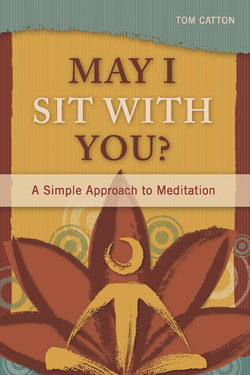Читать книгу May I Sit with You? - Tom Catton - Страница 10
На сайте Литреса книга снята с продажи.
ОглавлениеINTRODUCTION
In the early 1930s, a hopeless alcoholic sought help from Dr. Carl Jung, a well-known Swiss psychiatrist. The patient had resigned himself to the tormented reality that he suffered from the chronic inability to stop drinking. In those days, such people often ended up in jail or a mental institution; many lost everything that had ever been dear to them, including family, friends, careers, and ultimately, life itself. Addiction was viewed as a lapse in morality and had not yet been recognized as a medical disease.
This man came to Dr. Jung and asked for help. The psychiatrist told him that although he was unable to help him, he had—on a few rare occasions—seen someone in the grips of alcoholism go through a profound personality change brought on by an intense spiritual experience. This visit, generated by a feeling of hopelessness, set into motion an accumulation of events that gave birth to the Twelve Steps. The twelve-step movement became one of the most powerful spiritual movements of the twentieth century.
What follows on the pages to come is about this profound personality change—an awakening of the spirit—and the importance of it happening again and again.
I attended my first twelve-step meeting in February of 1968 and have practiced the spiritual principles of this path, along with complete abstinence from alcohol or other drugs, since October 20, 1971. There are times when the spiritual path calls upon us to let go of old ideas, people, places, and things. This can make us feel like we have been stripped of everything that has given us a sense of being.
The devotion to living a spiritual life becomes a life of letting go, and one of practicing the spiritual principles for eternity. Yet the paradox is that we attempt to practice these principles moment to moment, day to day. The poet Emily Dickinson once wrote that “Forever—is composed of Nows.” I believe this beautiful line is a prescient view of both the recovery and spiritual experiences. Even without our consent we seem to be led to surrender again and again; surrender becomes our offering to a world of impermanence.
I do not proclaim to be a meditation teacher, but it is with passion that I talk and write about the practice. I don’t work in the field of addiction, nor am I a therapist, but I sponsor and work the Twelve Steps with men around the globe.
I’m a simple recovery guy with a passion to grow spiritually and share the spiritual path with others. Our Twelfth Step states that we have had a spiritual awakening and we are to carry the message to others. The message is, and always has been, the spiritual awakening that comes from working the steps.
Like the pursuit of education in any other school, my spiritual education has included many different classes and teachers. The difference is that there will be no graduation day; the call for continuing education credits is ceaseless.
The way of the Veda or Vedanta influence in the sixties captured the attention of my spirit while it permeated the philosophy that influenced the “flower children.” I was immediately drawn to the words of Paramahansa Yogananda and Maharishi Mahesh Yogi; little intellectual understanding was necessary, as the vibration of their words found their way to my heart. I suddenly knew what I wanted to be when I grew up: a spiritual seeker. Since then, there has been no turning back.
Over forty years later, my education continues with enthusiasm. I walk a spiritual path characterized by diversity, and my soul has been touched by a number of practitioners from many different spiritual paths.
The Twelve Steps act as solar lights that illuminate the path, guiding me in the right direction. Embracing the Eleventh Step enables me to fly freely in continuing my awakening.
My aspiration is to sit with each of you in silence and be mindful of our breath, knowing when we breathe in and breathe out, walking in the Pure Land of the beautiful moment.
This book contains no story line. You may open it to any page and begin reading. Each page contains a suggested message of contemplation and reflection for your practice.
You will find that meditation is full of repetition, and at times your practice will be nothing more than continually returning to the breath. This book is filled with repetition, and this is because our wandering minds need to hear the message, again and again.
